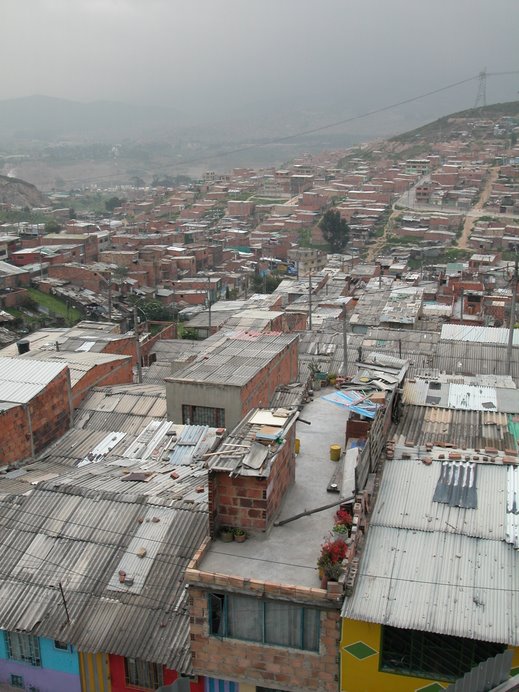 |
| Aftermath of the El Salado massacre. (Photo: El Tiempo) |
Pres. Juan Manuel Santos
asked for forgiveness in the name of the state from the people of El Salado, a community in Bolívar department where right-wing paramilitaries committed some of their most
notorious massacres between 1997 and 2000.
 |
| Pres. Juan Manuel Santos. |
"Here there was omission by the state, all kinds of failings, just as there were during so much time," said Santos, who minister of defense during the presidency of his predecessor Alvaro Uribe.
Santos deserves credit for his statement, but it falls short. Overwhelming evidence shows that government forces often collaborated with the 'paras' or deliberately stood aside to let the paramilitary death squads do their killing. Generally, the paramilitary forces justified themselves by accusing residents of being disguised guerrillas or cooperating with the guerrillas. Meanwhile, the U.S. government, which has given lots of military aid to Colombia,
appears to have turned a blind eye to Colombian military-paramilitary collaboration.
 |
| Skeleton of en El Salado massacre victim. |
In the
single worst killing episode in El Salado, in February 2000, the paramilitaries used extraordinary cruelty, torturing their victims with screwdrivers, raping women and playing football with their victims' heads. Unconcerned about government forces intervening, the paramilitaries spent three days in town massacring more than 100 people. Afterwards, hundreds of people fled the region.
According to later investigations and confessions, the massacre was ordered by paramilitary leader
Rodrigo Tovar Pupo, known as Jorge 40, who in turn was following the commands of top paramilitary leader
Carlos Castaño.
As terrible as El Salado was, it was only one of
innumerable massacres committed by the paramilitaries and their guerrilla enemies.
 |
| Victims of one of the El Salado massacres. (Photo: CNRR.ORG.CO) |
Ironically, despite the president's apology, almost nobody appears to have been punished for the El Salado massacre. Four military officers accused of collaborating with the paramilitaries or not trying to stop the massacres were either
given slaps on the wrist or absolved from wrongdoing. As for the paramilitary leaders, Castaño was killed in 2004 by rival paramilitaries, while Jorge 40 and other paramilitary leaders were extradited in 2008 to the United States for trial on drug trafficking charges. At the time of the extraditions, the paramilitaries' victims protested that this would mean that justice would not be done in their cases - and so far this appears to be happening. In fact, the
paramilitaries' files have been sealed, so observers cannot even review their cases. Ironically,
The Washington Post reports, the files were probably sealed to
protect the paramilitaries' safety, since they're cooperating with U.S. authorities. One of Jorge 40's assistants is
reportedly even walking free and living comfortably in the U.S.
 |
| Memorial to the massacre. (Photo: CNRR.ORG.CO) |
As terrible as it is that few may ever be punished for El Salado and other massacres, it's probably also true that the paramilitaries are
suffering more in U.S. prisons than they would be locked up in Colombia, where the prisons are relatively more corrupt and the paras could continue running their criminal enterprises from their cells.
In his recent apology, Pres. Santos also promised to
heal the wounds and provide restitution to the community. That will be impossible, but at least the state is making an effort.
 |
Before the massacre:
Children in a healthy community. (Photo: CNRR.ORG.CO) |
The deeper question is
how much Colombia has changed. Altho many paramilitary groups have demobilized and many of their leaders are in U.S. and Colombian prisons,
new violent groups have popped up in many of the same regions. And,
as long as Colombian government forces cannot effectively control stretches of the country's territory and guerrillas continue attacking civilians, and as long as huge amounts of drug profits are available for outlaw groups, paramilitary and self-defense groups will continue appearing to fight the guerrillas, trapping civilians in the middle. That's also why the leftist guerrillas hold some of the moral guilt for the paramilitary massacres. The paramilitaries are a predictable and inevitable result of the guerrillas' activities.
By Mike Ceaser, of
Bogotá Bike Tours


































